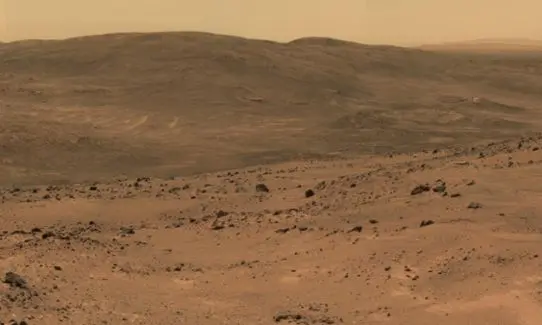Air quality researchers use Mars as a laboratory in new project
Dust from sandstorms in desert areas degrades air quality even over long distances and can cause other problems for society as well. At the same time, scientists find it difficult to study and describe these processes with sufficient accuracy, without interference from other aerosols. But now they have found an atmosphere rich in desert dust that can serve as a laboratory: the planet Mars.
Wind-blown dust is one of the most common aerosol particles in the atmosphere. These particles can affect climate by reflecting and absorbing solar radiation, but also by influencing cloud formation. Dust can be transported over long distances in the air, thereby spreading nutrients to terrestrial and marine ecosystems. High levels of dust particles can degrade air quality, cause adverse health effects and affect aviation safety.

Using data from the planet Mars, researchers will gain new insights into how dust particles are dispersed during sandstorms on Earth.
Dust spreads from desert areas
The main source of airborne dust particles is the great desert areas. Emissions of dust particles are driven by the wind, which causes medium-sized sand grains near the ground to be lifted and travel short distances through the air in a bouncing motion.
“As these sand grains fall to the ground, they rebound and splash small dust particles off the surface. They can remain in the air for several days. During this time, the dust particles can be transported far in the air,” says Michael Kahnert, researcher in aerosols and air quality at SMHI.
This emission process is called saltation. It is physically complex and difficult to describe in air quality and climate models. When scientists study desert aerosols from satellite, the dust particles are mixed with other types of aerosols, mainly air pollution from human emissions or sea salt particles. This makes the measurements very difficult to interpret.

During a sandstorm in a desert area, dust particles are dispersed into the air where they can remain for several days and be transported long distances by the air.
Vast desert landscape
Now Michael Kahnert and his colleagues have found a way to study the processes of dust particles without being disturbed by other aerosols: using the planet Mars as a laboratory.
“The entire planet Mars consists of a vast desert landscape and there are no people or ocean surfaces that give rise to other types of emissions that could interfere with the measurements,” says Michael Kahnert.
During 2008, the Phoenix space probe was positioned on Mars. The probe made a variety of measurements, including a lidar instrument that emits laser pulses and measures the light signal that is backscattered by suspended dust particles. Phoenix also had weather measuring instruments, including wind observations. The researchers will now analyse these data to highlight the relationship between wind speed and particle emissions. They can use this knowledge to evaluate a numerical model to calculate the emission process. They will then compare the model with measurements from the lidar instruments on the CALIPSO and EarthCARE satellites to study wind-driven dust emissions on Earth. The research will be used to develop SMHI's MATCH atmospheric chemistry dispersion model.
“As far as I know, no one has used data from Mars to study this before, so it will be exciting,” concludes Michael Kahnert.


